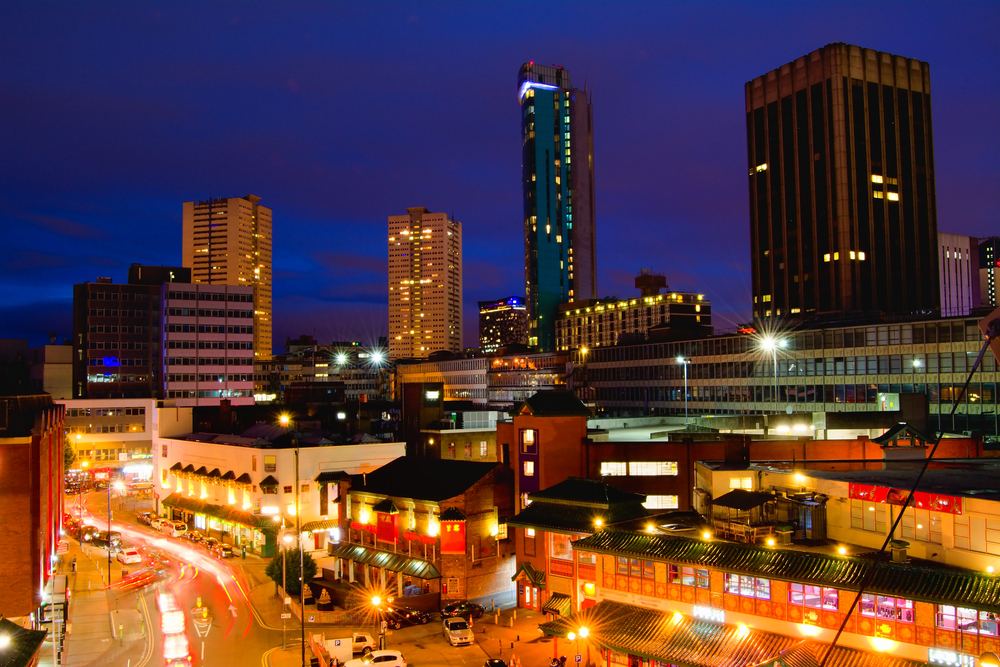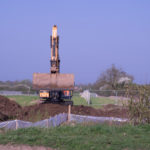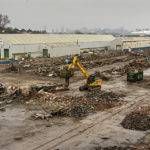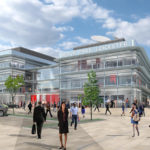Features - Business
Midlands momentum – How Middle England defied the southeast’s Brexit gloom

Seen through the Brexit-tinted telescope of London, it’s easy for people in the capital to assume the Midlands is having a tough time of it. After all, the logic goes, the Midlands is Britain’s manufacturing heartland – and manufacturing output is shrinking fast.
While the contraction in UK manufacturing was painful in 2019 – an eye-watering 2.6% drop in Q2 was followed by a negligible 0.1% increase in Q3, according to official statistics – the Midlands’ construction sector has remained remarkably well insulated from the manufacturing slowdown, and the orders have continued to roll in.
That resilience is in part due to sterling’s devaluation, which has helped bolster overseas demand for manufactured goods made in the Midlands.
But the region’s principal firewall against the Brexit drag seen elsewhere is the HS2 halo effect. While HS2 was initially seen as an enabler for the Northern Powerhouse project, question marks about the high-speed rail route’s ultimate scope have so far made the Midlands the biggest winner.
At the time of writing, the entire project is still under government review, with the full Oakervee Report not due until later this year. But with many observers predicting that HS2’s second phase, which would link Birmingham to Leeds and Manchester, could be pared back or even scrapped, the dividends so far have been focused on and around Birmingham.
If Phase I goes ahead as planned, journey times between the UK’s second city and London will be cut to just 52 minutes, putting Birmingham firmly within commuting distance of the capital. That prospect has ignited a surge of residential development across the West Midlands, and especially in areas close to proposed HS2 stations.
Of course the case for HS2 was always more about capacity than speed. So it’s a grim irony for developers here that a programme designed to bring greater resilience and certainty to the region’s transport infrastructure should now be the source of such uncertainty.
Most impartial observers also agree that the case for HS2 makes most sense only if the full, Y-shaped route gets built. But political expediency and business cases are not automatic bedfellows, and the danger that Phase II could be scrapped hangs especially heavily on developers who have invested in sites near proposed stations such as the East Midlands Hub, Stafford or Crewe.
Cancellation of Phase II would force the far-sighted who acquired land along the route into an awkward choice – either to dig in and retain sites that suddenly have less development potential, or to sell, potentially at a loss.
HS2 isn’t the only programme to be raining dividends on the Midlands’ construction market. The Commonwealth Games – which are due to be held in Birmingham in 2022 – are proving another strong engine of investment.
The heart of the programme is the £70M redevelopment of the Alexander Stadium, which will host the Games’ opening and closing ceremonies, as well as the athletics events. The programme has been designed to build on the lessons learned at London 2012, especially when it comes to the legacy question.
The stadium will be the focal point of a £500M regeneration of the formerly run-down Perry Barr neighbourhood, which will include the construction of accommodation for 6,500 athletes and officials. After the Games, this athlete ‘village’ will be transformed into up to 1,500 homes.
Birmingham’s commercial property market is thriving too, with the city successfully luring several large corporates into relocating parts of their operations there from London.
The biggest beast of all to make that move is the global bank HSBC, which moved its UK headquarters from the capital to a 10-storey, 210,000ft2 office in Birmingham’s Centenary Square. The building, which accommodates more than 2,000 staff, opened in February 2019 and has allowed HSBC to create 700 new jobs in the city.
In January 2020, BT followed suit by announcing plans to consolidate most of its Birmingham-based staff into Three Snowhill, a landmark development in the heart of the business district. Having signed a 20-year lease, the communications giant intends to move as many as 4,000 staff there and will occupy most of the building’s 17 storeys.
But even those employers moving to Birmingham on a smaller scale are drawn for similar reasons. The city is blessed with a well-educated workforce, yet has average salaries 20% lower than those in London.
Deutsche Bank and KPMG both have large bases in Birmingham already and are dialling up their staff numbers, and construction is well underway at a 239,000fsq ft Government Hub building that will eventually house 3,600 civil servants from HMRC and DWP.
Naismiths’ Midlands team has never been busier, and in the 12 months to the end of Q3, we received 25% more new instructions than we did in the previous year.
Looking ahead, that trend is likely to continue. Despite the Midlands’ large manufacturing sector, it has proved surprisingly well insulated from Brexit headwinds. And while the cancellation of Phase I of HS2 would be a major blow for the region’s infrastructure players, the momentum in both residential and commercial property is now such that, combined with the ongoing stimulus from the Commonwealth Games, construction in the Midlands will continue to offer a bright spot against the sombre outlook seen elsewhere.
Article submitted by Ben Harwood, a director at the national surveyors and property consultants Naismiths.
If you would like to read more articles like this then please click here.
Related Articles
More Features
- Ten years of progress on payment, pre-qualification and skills
19 May 25
The industry has made significant progress on late payment, pre-qualification, and competence since the formation
- Pagabo provides clarity on impacts of new NPPS and PPNs
12 Mar 25
The Labour government’s new National Procurement Policy Statement (NPPS) sets out strategic priorities for public
- How is the Procurement Act going to drive social value
24 Feb 25
The regulations laid out within the Procurement Act 2023 will go live today.






